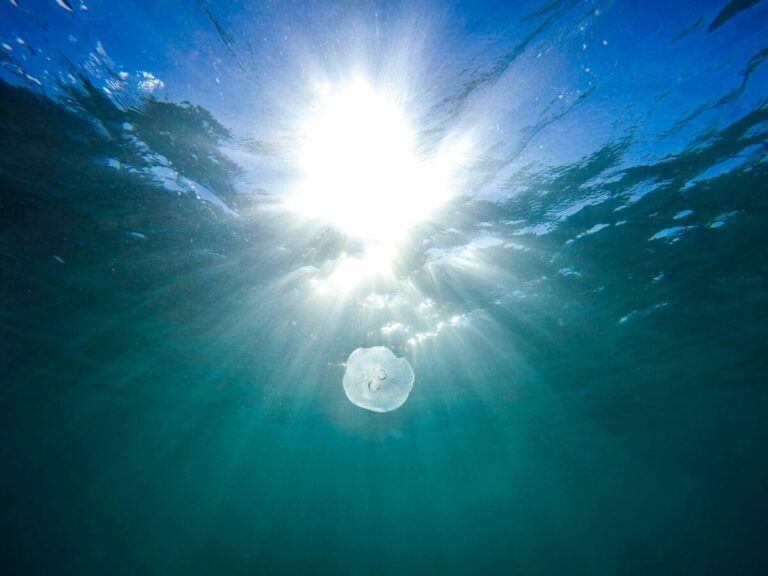The US Navy has funded Danish research into preventing biofouling while maintaining visible light transmission on underwater solar cells. The best solution uses ultra-low concentrations of nano-sized, seawater-soluble pigments. Power generation remained at almost 100% after 13 weeks underwater.
Researchers funded by the US Navy have developed a new coating for underwater solar cells that prevents biofouling while maintaining visible light transmission. Biofouling, the attachment and growth of organisms, can reduce the optical efficiency of solar cells. These cells are used in unmanned and autonomous underwater vehicles for marine surveillance, oceanographic research and other applications.
“The need for the current research is highlighted by the current lack of coating systems that are both pollution resistant and maintain light transmission on their own,” the academics said. “Existing coatings require regular human intervention, such as mechanical cleaning and care techniques, to maintain efficiency, which is a tedious and labor-intensive process. The proposed self-polishing technology has the potential to eliminate the need for mechanical care, providing a more efficient and less labor-intensive solution.”
The new solution uses ultra-low concentrations of nano-sized, seawater-soluble pigments, such as copper oxide (Cu2O) and zinc oxide (ZnO), combined with an organic biocide and a fast-polishing binder. The team explained that when these coatings are exposed to seawater, the pigment particles dissolve, creating a porous layer that allows seawater to diffuse into the coating.
“This leached layer allows the dissolved biocide compounds to diffuse out of the coating and into seawater,” they said. “The leached layer binder matrix reacts with seawater ions and forms soluble compounds in a controlled manner. To balance this and achieve a higher or lower polishing rate, self-polishing coatings use copolymers that may or may not hydrolyze in seawater. As hydrolysis continues, the eroding polymer and dissolving pigment fronts expose new layers of acrylic polymer and pigments, leading to a self-polishing effect with a more or less stable leached layer thickness.”
The research team tested different binder systems for the coating, using different particle mixtures. They used silyl acrylate (SA) alone or combined with rosin (SA-R) in a weight ratio of 70:30 for the binders. The particle mixtures include nano-sized copper oxide (NC), nano-sized zinc oxide (NZ), the organic liquid biocide SeaNine 211 (SN), micron-sized copper oxide (MC) and micron-sized zinc oxide (MZ). .
They applied the coatings to 6mm thick, smooth, transparent polycarbonate substrates measuring 200mm x 100mm. The coated panels were immersed in the port of Hundested, Denmark for two and a half months. Inspections and photographs were taken after two, six and ten weeks.
“The combined action of NC, NZ and SN in an SA-R coating provided significant fouling resistance over the 12-week exposure period, attributed to the synergistic rate of dissolution effects and the rapid polishing rate of the SA-R binder. the researchers said.
This champion coating had an NC pigment volume concentration (PVC) of 0.04%, NZ PVC of 0.08% and a solvent-free coating base (SN) weight percent of 3%.
“The same formulation showed complete polishing at week 12, after which the coating began to foul, implying a high polishing rate of approximately 1.4 μm/day, exceeding conventional rates of 5–15 μm/month (0.15–0. 5 μm/day) exceeds. ),” the researchers said. “Further testing of the formulation was conducted by the Office of Naval Research (ONR) in Florida, where the coating demonstrated exceptional resistance to biofouling in warm (22 C to 30 C) seawater with extreme fouling conditions. Solar energy generation remained almost 100% efficient for 13 weeks.”
The researchers say that the nano versions of Cu2O and ZnO are about twenty times more expensive than the conventional micron versions. However, they noted that the low volume required in the developed solution keeps formulation costs relatively low.
The researchers from the Technical University of Denmark described their work in “Self-sustaining anti-fouling coating for underwater solar cells”, which was recently published in Advances in organic coatings.
This content is copyrighted and may not be reused. If you would like to collaborate with us and reuse some of our content, please contact: editors@pv-magazine.com.


